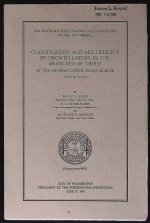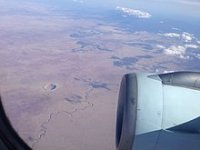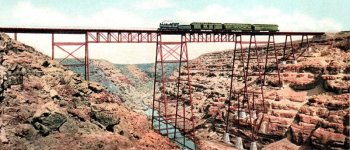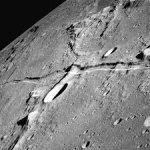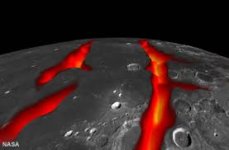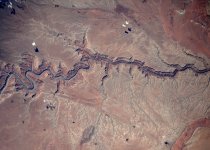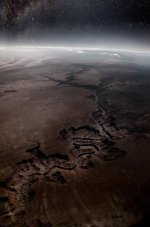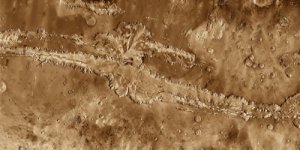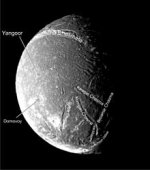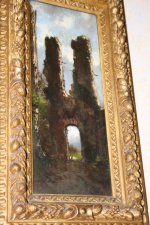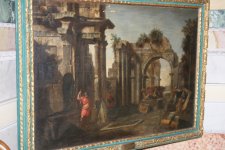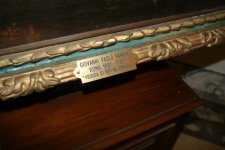I will preface this by saying that the world-renowned conquistador Francisco Vázquez de Coronado is a very questionable figure in my book. May be he was wronged by the history re-writers, but according to what we know, the guy did not know his arse from elbow. He went looking for the Quivira Regnum, and instead of exploring the Pacific North West (where all the maps were pointing to) went to the future central Kansas.

Guess what, he even managed to find it in Kansas. Considering that Quivira Regnum was never there, his achievement is highly questionable? But then again, Mr. Coronado did not speak to me personally, his true records could have been substituted, and our official sources are laughable:


KD: Considering that the entire world suffered something catastrophic at about 1650 AD, there is no way the Coronado expedition could observe the Grand Canyon in 1540 AD. The Grand Canyon was not there in 1540. The Grand Canyon area was populated by various races residing in multiple cities.
To avoid being questioned, TPTB came up with the stupid "Colorado River" hypothesis, and added this 1540 "eyewitness" account to support their narrative of "things happened the way we tell you."
Naturally, I wanted to suggest a hypothesis of my own, where there was no Grand Canyon prior to the event which happened around 1650s. The following SH articles are being provided in support of the above hypothesis.


The hypothesis of this 100 year shift (could be 200 as well) is based on the following. If there was such a thing as an adjustment of historical time frames, the 1592 date for the discovery of America could mean the work in progress. As in, when TPTB was in the process of assigning various times to various events. And the above 1750s dates are conclusive with the jump start of many things in history, including the establishment of the United States of America.
Guess what, he even managed to find it in Kansas. Considering that Quivira Regnum was never there, his achievement is highly questionable? But then again, Mr. Coronado did not speak to me personally, his true records could have been substituted, and our official sources are laughable:
- Quivira is a place named by explorer Francisco Coronado in 1541, for the mythical "Seven Cities of Gold" that he never found.
- From an Indian the Spanish called "the Turk" Francisco Coronado heard of a wealthy civilization called Quivira far to the east.
- Which one is it? Named, or heard of?
- ...another one of such questionable discoveries is the Grand Canyon
The Grand Canyon
The Grand Canyon is a steep-sided canyon carved by the Colorado River in Arizona, United States. The Grand Canyon is 277 miles (446 km) long, up to 18 miles (29 km) wide and attains a depth of over a mile (6,093 feet or 1,857 meters).- Nearly two billion years of Earth's geological history have been exposed as the Colorado River and its tributaries cut their channels through layer after layer of rock while the Colorado Plateau was uplifted. While some aspects about the history of incision of the canyon are debated by geologists, several recent studies support the hypothesis that the Colorado River established its course through the area about 5 to 6 million years ago. Since that time, the Colorado River has driven the down-cutting of the tributaries and retreat of the cliffs, simultaneously deepening and widening the canyon.
- For thousands of years, the area has been continuously inhabited by Native Americans, who built settlements within the canyon and its many caves. The Pueblo people considered the Grand Canyon a holy site, and made pilgrimages to it. The first European known to have viewed the Grand Canyon was García López de Cárdenas from Spain, who arrived in 1540.
- In September 1540, Captain García López de Cárdenas, along with Hopi guides and a small group of Spanish soldiers, traveled to the south rim of the Grand Canyon between Desert View and Moran Point.
- No Europeans visited the canyon again for more than two hundred years.
- Fathers Francisco Atanasio Domínguez and Silvestre Vélez de Escalante were two Spanish priests who, with a group of Spanish soldiers, explored southern Utah and traveled along the north rim of the canyon in Glen and Marble Canyons in search of a route from Santa Fe to California in 1776. They eventually found a crossing, formerly known as the "Crossing of the Fathers," that today lies under Lake Powell.
- Also in 1776, Fray Francisco Garces, a Franciscan missionary, spent a week near Havasupai, unsuccessfully attempting to convert a band of Native Americans to Christianity. He described the canyon as "profound".
- Grand Canyon - Wikipedia
- 1540: ...the Grand Canyon was seen for the first time
- 1776: ...the Grand Canyon was seen for the second, and third time
- 1776: ...The US Declaration of Independence is the pronouncement adopted by the Second Continental Congress meeting at the Pennsylvania State
- Yet, nobody had ever seen the Grand Canyon between 1540 and 1776. Right?
John Wesley Powell
John Wesley Powell (1834 – 1902) was a U.S. soldier, geologist, explorer of the American West, professor at Illinois Wesleyan University, and director of major scientific and cultural institutions. He is famous for the 1869 Powell Geographic Expedition, a three-month river trip down the Green and Colorado rivers, including the first official U.S. government-sponsored passage through the Grand Canyon.- Importance: Mr. Powell was the one to name our 277 by 18 mile cavity. It became "The Great Canyon" in 1869.
- Powell was responsible for most of the names in the Canyon. He called it Grand Canyon on the first trip. Previously it was the Big Canyon or Great Canyon by the few who knew of it.
To avoid being questioned, TPTB came up with the stupid "Colorado River" hypothesis, and added this 1540 "eyewitness" account to support their narrative of "things happened the way we tell you."
Naturally, I wanted to suggest a hypothesis of my own, where there was no Grand Canyon prior to the event which happened around 1650s. The following SH articles are being provided in support of the above hypothesis.
100 year shift
There is a slight possibility that the events of 1650s, in reality took place in 1750s. The basis for this assumption is based on a few different instances. One of those I will keep to myself for right now. It involves the City of Pompeii, and will be an article of its own. The other two are:- 2. The second one is the courtesy of Mabzynn. Pretty sure it is not even a surface scratch. I have not looked for the America related events yet, but the maps sure support the below events.


